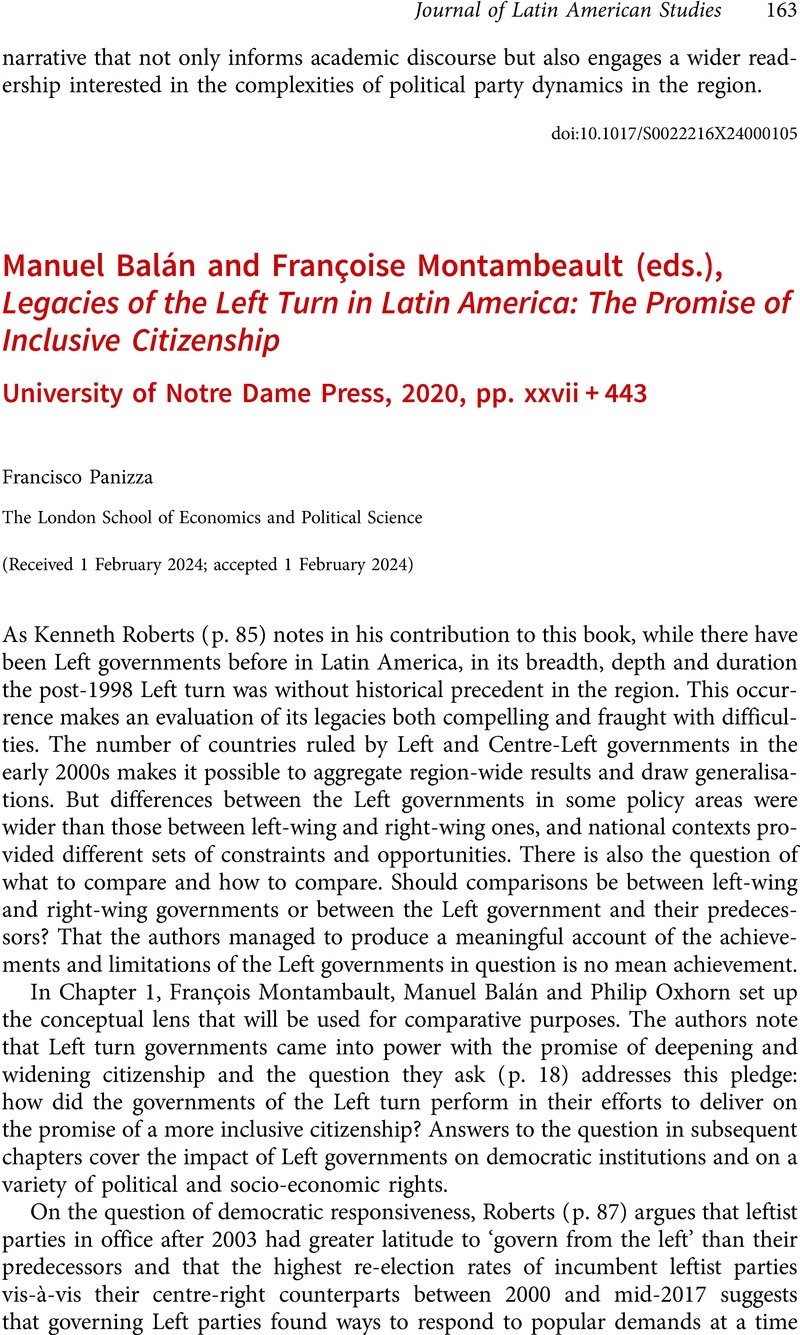No CrossRef data available.
Article contents
Manuel Balán and Françoise Montambeault (eds.), Legacies of the Left Turn in Latin America: The Promise of Inclusive Citizenship University of Notre Dame Press, 2020, pp. xxvii + 443
Review products
Manuel Balán and Françoise Montambeault (eds.), Legacies of the Left Turn in Latin America: The Promise of Inclusive Citizenship University of Notre Dame Press, 2020, pp. xxvii + 443
Published online by Cambridge University Press: 20 March 2024
Abstract
An abstract is not available for this content so a preview has been provided. Please use the Get access link above for information on how to access this content.

- Type
- Reviews
- Information
- Copyright
- Copyright © The Author(s), 2024. Published by Cambridge University Press



